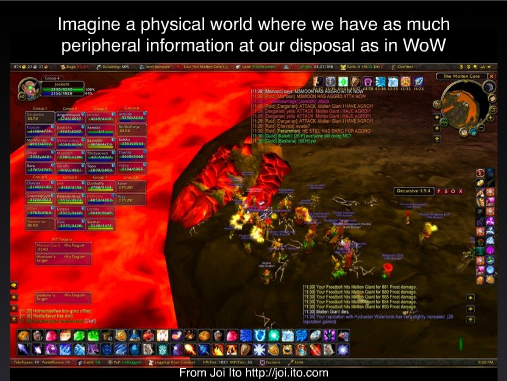I ran across some notes from the Web 2.0 Expo back in April that are still relevant and worth sharing. Today I’ll post on the talk that Jyri gave on Building Sites with Social Objects, tomorrow I’ll post notes from a talk given on iPhone Development Anti-Patterns.
Jyri Engestrom founded Jaiku which was later acquired by Google and is involved in some of their most interesting social networking products including Google Latitude. In his session, he started by giving a quick run down of successive social networks from the past emphasizing that despite media coverage of facebook (and more recently twitter), the game is far from over:
Firefly, grew to 2M users, acquired by Microsoft
Six Degrees, grew to 3M users, folded
Friendster, grew to 90M users, collapsed under it’s own weight
MySpace, tens of millions of users, acquired by Fox
Facebook, over 250M users, still growing and independent
The game is not over. We are still talking about a segment of the population. Social Networks have not (yet) replaced e-mail, sms, or the telephone as the lowest common denominator way to get in touch with someone.
Jyri went on to describe how social networks are built and what differentiates a successful social network from others that fail. Most importantly, social networks are about connecting people but there needs to be a catalyst to drive that connection, something with a tangible incentive. Using the metaphor of kids gathering to play together on the beach, Jyri explains that they gather together around a common object, such as a ball. In this same way, people connect around something he calls a “social object.” Think of all the successful social networks and you can see this pattern:
YouTube – video clips
digg – links
flickr – photos
last.fm – music tracks
good reads – books
slideshare – presentations
In each case, there is a shared object that drives the connection and draws outsiders into a conversation. Bringing up the case of Russell Beattie, Jyri talks about LinkedIn. It’s a useful but only as a profile service, a place to showcase your resume and people don’t connect around profiles. I would argue that LinkedIn has been improperly categorized as a social network when, in fact, it’s more accurately a crowd-sourced recruitment database.
Jyri then went on to list out the steps towards designing a successful social network:
1. Define the Social Object.
2. Define the verbs around the object. For example,
– eBay – buy/sell
– flickr – upload/favorite
– dopplr – add a trip
– upcoming – add/watch an event
The Activity Strea.ms group has been doing some work here and their wiki and mailing list is a great resource. They have catalogued a number of common verbs and are attempting to unify these verbs to enable broader sharing and connectivity across social networks.
3. Promote the sharing of objects with easy to use tools
– ensure all your objects can be adddressed by permalinks which can be emailed
– create embedable widgets so that bloggers can promote attractive galleries of your social objects. Think flickr badges.
4. Turn invitations into gifts. Each invitation sent by your members should have an immediate value attached in the payload of the message. The days of “Register or click here to see more” are long over.
5. Charge publishers, not the spectators. The people that use your platform to further their financial goals should pay to access your audience.
Finally, Jyri spoke about the future. I’ll add my own observations in here as well because I’ve been doing a lot of thinking about this too.
As with the Russell and LinkedIn, the days of connecting just to goose your numbers are over. Twitter is the latest to inherit this behavior and while it may be valuable to have a large number of followers, it makes little sense to follow too many people yourself. As Robert Scoble has realized, the less people you follow, the better the signal.

Future behavior on social networks will be to enhance what Jyri calls, “social peripheral vision” Citing examples such as the head’s up display on World of Warcraft, Jyri tries to imagine a world where your physical world is annotated with data about their interaction your social network.
Today it is still very early in the game. Each of us, with our lifestreams and status updates, are firing off signals like “pulsars into space.” The tools we use to monitor and keep up with are friends are still very primative and much of the talk is about trying to keep up or make sense of it all. In this sense, as we consume a combined lifestream of all our friends, we are not unlike ham radio operators, sifting through the radio bands and sharing notes as we look for a signal, a pattern.
Jyri concluded his talk describing something he called “nodal points” which is he uses to describe a, “pattern or algorithm that pulls information out of data.” It is this pursuit of nodal points that we are seeking. Each social network should have it – it’s where the collective commentary draws a pattern that represents a greater intelligence. Think of flickrs’ Shape files, the clusters of headlines on Techmeme, or the still fallible trending topics on twitter. These are nodal points and each successful social network should have them.
So here’s Jyri’s checklist for a successful social networks.
- Define a social object
- Define a set of verbs & actions which can be taken on the object.
- Aggregate the social objects and annotations by the community to create nodal points.
Leave a Reply to Silicon Valley visits HelsinkiCancel reply